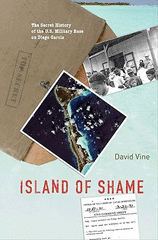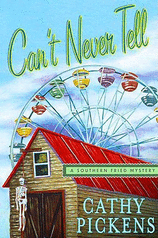 the short story collection The Man in the Buick, scholarly theatrical books and articles, and many short stories.
the short story collection The Man in the Buick, scholarly theatrical books and articles, and many short stories.She applied the “Page 99 Test” to her new thriller, The Odds, and reported the following:
I open my own book (the ARC version) to p. 99, wondering what I will find. And this is what it is: Joel, an eleven-year old boy is researching gunshot wounds at his friend’s computer. Why? 1. Joel is poor and doesn’t have a computer at home. 2. He has just encountered a man who is wounded, unable to walk, and he thinks he can help this man. He’s rushing through sites and memorizing medical terms while his friend Russell, who knows nothing of Joel’s real quest, is down in the kitchen trying to cadge some food without angering his mother. Joel is very smart. And he’s turning out to be a capable liar.Preview The Odds, and learn more about the book and author at Kathleen George's website.
The page splits and a new scene begins. It’s a “meanwhile” scene that captures what Joel’s sister Meg is doing. She’s thirteen and also a good pretender when it’s necessary. In the scene on p.99 she brushes up her appearance in the ladies’ room of Allegheny General Hospital in preparation for a visit to the ER where she will attempt to find out all she can about emergency procedures for a gunshot wound. She will say it’s for a Science Fair project and that she is a likely candidate for a prize. The project is a falsehood, but Meg, like her brother, is off the charts at school, super-smart. And the two of them are smitten by the wounded man.
Yes, this is a mystery. While my detective Richard Christie is undergoing chemo, while the force is in some turmoil and Narcotics is leaching detectives from Homicide for a big drug bust, on the street terrible things are happening to those who have come anywhere near the major drug dealers. At the center of The Odds are a family of abandoned kids and a wounded man who reminds them of their father.
Excerpt:
Joel pounds keys as fast as he can, almost cursing with impatience. He kills time looking at guns, waiting to transition to “Gunshot wounds.” If only Russell would be called to dinner and leave him alone for a few minutes. He opens the candy bar and breaks off a bite for himself. The gun he handed to Nick is possibly a .45, or no, a 9mm. Latter picture is the one that made the wound, then.
“Cool gun.”
Joel grunts.
“You taking notes?”
Joel points to his head. “Memory. You got anything good to eat downstairs?”
“Cheese and crackers. My mom gets mad when I eat before dinner, but maybe I can get some.” He slides off the bed, hesitates, and finally leaves the room.
As fast as he can, Joel types in “GSW compound fracture.” A bunch of pictures comes up, but he’s going through sites as fast as he can. He tries, “treatment.” And “shin,” then “tibia.”
It is the tibia, and it is broken—and he has set it, but not firmly enough. Now he studies the text of medical journals and other sites.
Neuropraxic, paresthesias. New words come at him, words he likes.
His heart pounds as he reads on. He has done right. He was right.
Russell comes up with some crackers and cheese and a couple of cartons of juice. “She’s mad,” he says. “I took these anyway.”
The part of the candy bar Joel ate has awakened his hunger. He grabs handfuls of crackers and cheese, eating, going so fast on the Internet highway that Russell who wants to be interested can’t catch up.
In the women’s room at the hospital, Meg splashes cold water over her face, extracts a comb from her backpack. Her breath is still ragged from rushing. She mustn’t look like someone who’s been scrambling around in the weeds all day. Her light brown hair is shoulder length and straight, her bangs long. She looks ... ordinary. She takes a deep breath and walks out and down the hall to Emergency.
“I’m here to talk to someone about my research project,” she explains at the intake desk. “I need to do an interview with a trauma doctor. Physician.”
The receptionist rakes up some incredulity. She’s a black woman with severely straightened hair, very orderly, and she says, with affront, “This is an emergency room!”
“That’s what I’m supposed to write about. Trauma units. Specifically, treatment of gunshot wounds.”
--Marshal Zeringue
























